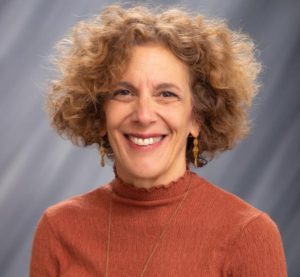Tagged: “family”
An Unprecedented “Big Data” Study in Australia Shows the Association between Forgiveness and Well-Being in Children and Adolescents

Pexels.com, Photo by Catarina Sousa
A recent study with 79,670 children and adolescents (aged 7 to 18) in Australia examined whether those who report favorably on forgiveness also have sound psychological health. They concluded their Abstract this way: “These big data findings provide firm evidence that, like adult samples, forgiveness and self-forgiveness are factors in promoting psychological wellbeing, at least among Westernized youth and adolescents.” Of course, because this was not a cause-and-effect study, it is not clear that forgiveness and self-forgiveness promote psychological well-being. It could be the reverse: Those who are feeling well find it easier to forgive. Yet, this study is important because it is the first to use such an impressively large sample to examine forgiveness. The reference to this work is this:
Flaherty, E.M., Strelan, P. & Kohler, M. Forgiveness, self-forgiveness, and child and adolescent mental health: Big data findings from an Australian youth cohort. Journal of Youth and Adolescence (2025). https://doi.org/10.1007/s10964-025-02285-7
Dr. Suzanne Freedman Has a Forgiveness Article Published with the Des Moines Register Newspaper

Dr. Suzanne Freedman
On December 6, 2025, Dr. Suzanne Freedman, a professor at The University of Northern Iowa, had a guest column in the Des Moines Register entitled “What We Get Wrong about Forgiveness and Why It Matters.” In this insightful work, she makes the point that forgiving a person for an injustice does not require an apology. Otherwise, too much power is given to the one who acted unfairly. She further argues that to forgive is not to automatically reconcile, especially if the other remains untrustworthy. Further, to forgive is not only to give up anger because forgiveness, as a moral virtue, challenges the forgiver to see the humanity in the other person. This can take time, and the one who was offended should resist being pressured into a quick and superficial forgiveness. Thank you, Dr. Freedman, for your careful clarification regarding forgiveness for the general public. The article can be accessed here:
When Can Forgiveness Be Harmful to Emotional Healing?: Another Encounter with Artificial Intelligence

Pexels.com, Photo by Ron Lach
Over the past couple of years, the process of forgiveness has been criticized, and I have labeled this criticism as unnecessary or error-filled. For example, I published a blog on this site on August 21, 2024, entitled “The Summer of 2024 Now Has Seen Three Published Criticisms of Forgiveness” (https://internationalforgiveness.com/2024/08/21/the-summer-of-2024-now-has-seen-three-published-criticisms-of-forgiveness/).
Those criticisms made me curious. What will Artificial Intelligence say if I ask the question in this blog’s title? So, I went ahead and asked. Sure enough, I received an answer. Here are the points made by Artificial Intelligence and my rebuttal. Please see what you think as we examine four criticisms of forgiveness in the healing process.
1. When forgiving is forced onto someone, it can lead to a superficial forgiveness that short-circuits the emotional healing process. I wholeheartedly agree with this statement. I also wholeheartedly disagree that we are talking about genuine forgiveness here. Instead, we are talking about a false form of it. There is a vast difference between a free-will choice to forgive, with sufficient time to examine the emotional effects of being treated unjustly, and this rushed form of it. In this court of law, my client, forgiveness, is being confused with an impostor.
2. Forgiveness is harmful when the person’s safety is not restored. I agree that it is important to work on justice for the mistreated person, and this is the quest for justice. To claim that forgiveness itself can be responsible for a lack of safety is to think in “either/or” terms: Either we forgive or we seek justice, but we do not pursue both. As far back as Aristotle in ancient Greece, we are exhorted to practice the moral virtues, not in isolation, but together. In other words, when we forgive, let us bring the call to justice along with it. Forgiveness does not invalidate justice, but encourages it. Therefore, this idea that forgiveness is harmful is false. The error lies in treating forgiveness as an isolated process, which is incorrect.
3. Forgiveness is seen as harmful when it ignores the forgiver’s values or what is important to the person. In other words, the one who forgives supposedly distorts the seriousness of the injustice by simply letting it go. No, this is not what forgiveness is. When we forgive, we do not excuse the injustice. What happened was wrong, is wrong, and will continue to be wrong. The new stance is toward the person, not the situation, causing the pain from the injustice. Thus, the forgiver’s values are not ignored. Sometimes forgiveness can actually put forgivers’ values into even sharper focus by allowing them to see clearly and acknowledge what happened. Further, forgiveness not only leaves forgivers with insights about the unfairness but also with a scientifically supported approach to healing from the effects of what happened.
4. Finally, forgiveness is seen as harmful when others “weaponize” forgiveness, pressuring the injured person to be quiet, stop complaining, and let others live a comfortable life without hearing about the forgiver’s pain. Once again, this is not the fault of forgiveness itself, but of onlookers who fail to respect the forgiver and the healing process that is necessary when forgiveness is willingly chosen.
In summary, if you ever ask AI if forgiveness can be harmful, you likely will get a “yes” answer, possibly with the four ideas above and maybe even some new ones. Please keep in mind that AI can give false information. In each case above, the false information concerned false forgiveness, not the genuine essence of what forgiveness is and what it accomplishes in the hearts and relationships of those who choose to forgive accurately.
![]()
Worldwide Requests for Our Research Tools and Forgiveness Curriculum Guides

Photo by Pixabay, Pexels.com
Since the beginning of 2025, our International Forgiveness Institute has received requests for our forgiveness research tools and forgiveness curriculum guides from the following 40 countries:
Argentina, Australia, Austria, Brazil, Canada, Chile, Colombia, Egypt, El Salvador, France, Germany, Greece, Hong Kong, India, Indonesia, Israel, Italy, Japan, Malaysia, Netherlands, New Zealand, Nigeria, Panama, Peru, the Philippines, Poland, Portugal, Serbia, South Africa, Spain, Saudi Arabia, South Korea, Switzerland, Taiwan, Tunisia, Turkey, United Kingdom, United States, Vietnam, and Zimbabwe.
College Students, Forgiveness, and Well-Being

Photo by Cristian Loayza, Pexels.com
In a study of 463 Spanish university students done in 2025, the researchers reported positive correlations among forgiveness, hope, and self-esteem. They reported negative correlations among forgiveness and anger, anxiety, and depression. The authors suggest that preparing the students for a healthy entry into the workplace as adults could be enhanced if universities had forgiveness programs for the students.
The reference to the article is this:
Bonete S, Molinero C, Sendra S and González De Abreu AM (2025) A path to better mental health among emerging adults: forgiveness as a solution to interpersonal conflicts. Frontiers in Psychology, 16:1477283. doi: 10.3389/fpsyg.2025.1477283



